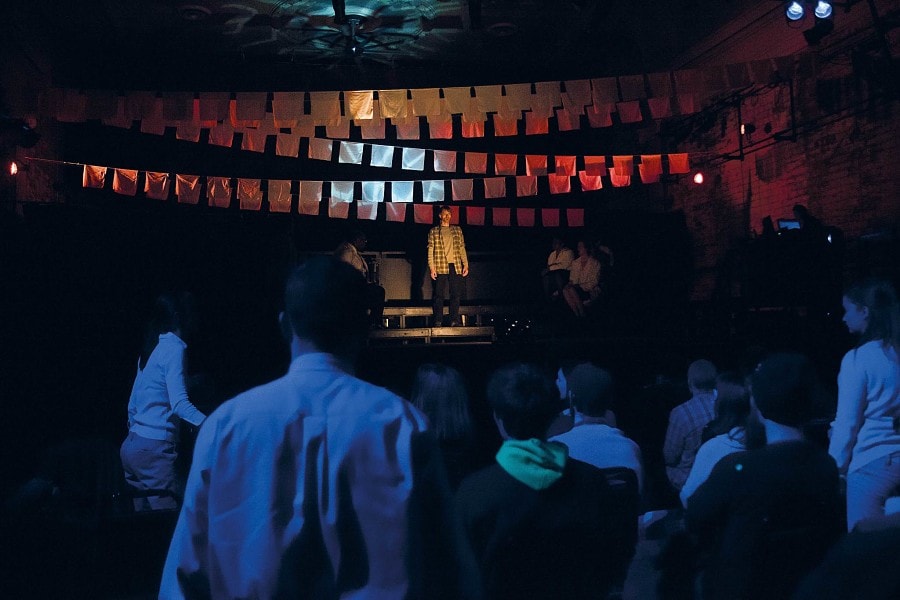From its earliest incarnations, theatre has been valued not only for its aesthetic, narrative and entertainment appeal but for its efficacy. For the ancients, theatre was a tool of civic engagement and communal healing as well as a celebration of culture made palpable in performance. As theatre held up a mirror to nature and society, it also served as a spur to collective aspiration. Those unifying, purposeful qualities are inherent to the form.
In our own times, as technology and information overload render human-to-human interaction ever rarer and make that once-exalted sense of group endeavor seem obsolete, theatre artists are increasingly interested in efficacy—in finding ways to bring communities and populations together via theatre for learning and purposeful action. This Approaches to Theatre Training special section surveys a contemporary cross-section of such work, with additional focus on schools and training programs that teach methodologies for social-activist, civic-minded art.
What the issue cannot be is all-encompassing—from the hundreds of artists, organizations and schools across the country devoted in one way or another to activist art, American Theatre has settled upon a visible few as emblems of a broad current that runs through the field. The Los Angeles–based Cornerstone Theater Company’s new California: The Tempest tour—covered by arts reporter David Nichols, who went along for part of the ride—proved an irresistible anchor for the section. These pages also include an exploration of the mission of teaching artists by practitioner Sarah Taylor Ellis, who doubles as a reporter and composer; a compendium of selected college and university programs with an activist bent, put together by AT contributor Lonnie Firestone; and, last but not least, “14 Theatrical Ploys that Aim to Change the World,” an eclectic package of mini-features by AT regulars Mark Blankenship and Stephanie Coen, covering artists, theatres and special projects that champion social or political causes or promote learning, civic involvement or social change.
Brecht’s famous recipe for epic theatre, his own version of a theatre of collective aspiration, dismissed the traditional dramatic theatre’s view of the audience as “passive spectators, a kind of mob, which must be and can be reached only through its emotions,” but valorized the spectators of epic theatre as “a collection of individuals capable of thinking and reasoning, of making judgments even in the theatre.” There’s something to be said, the artists in this issue seem to suggest, for both emotional impact and intellectual heft in the creation of work intended to engender change. See if you agree.


